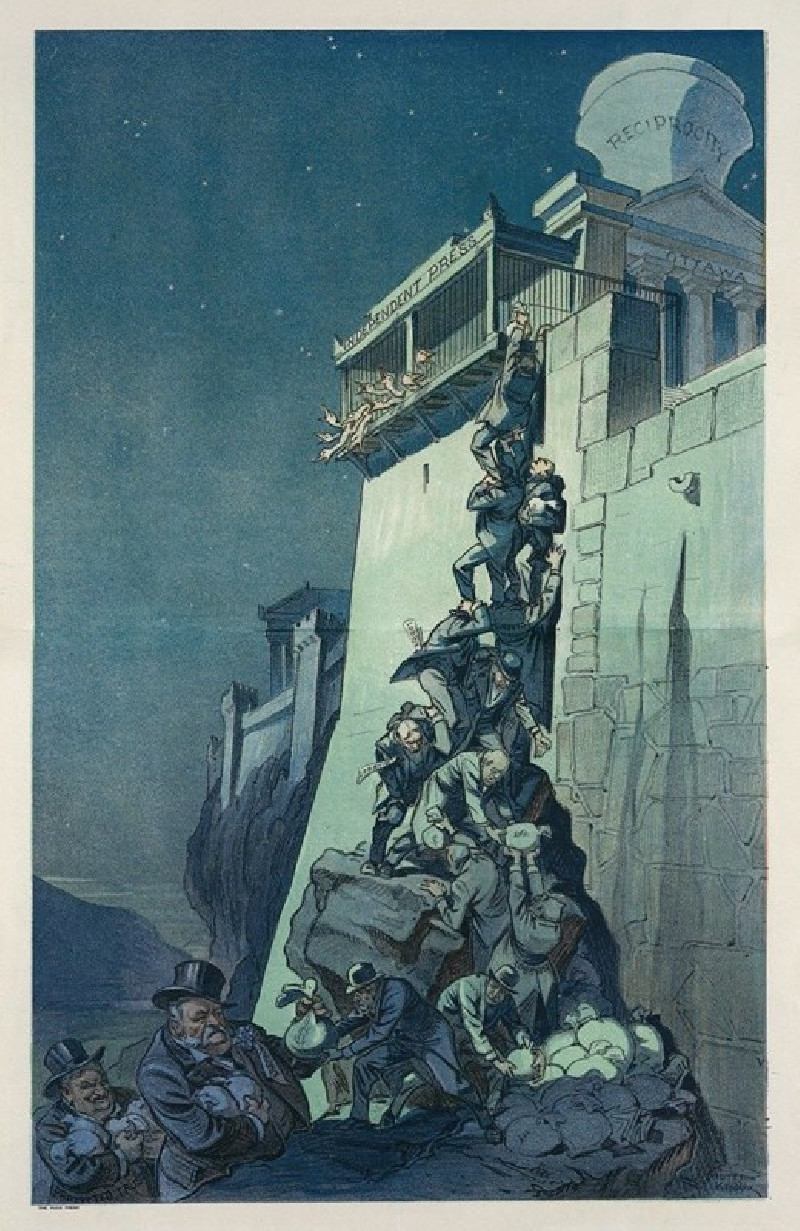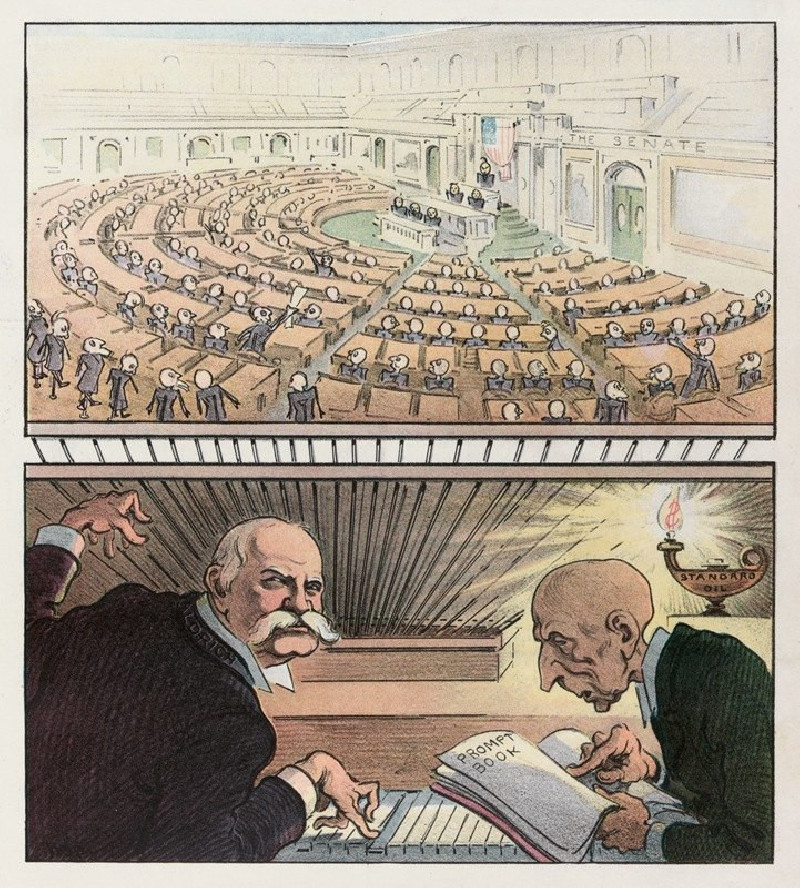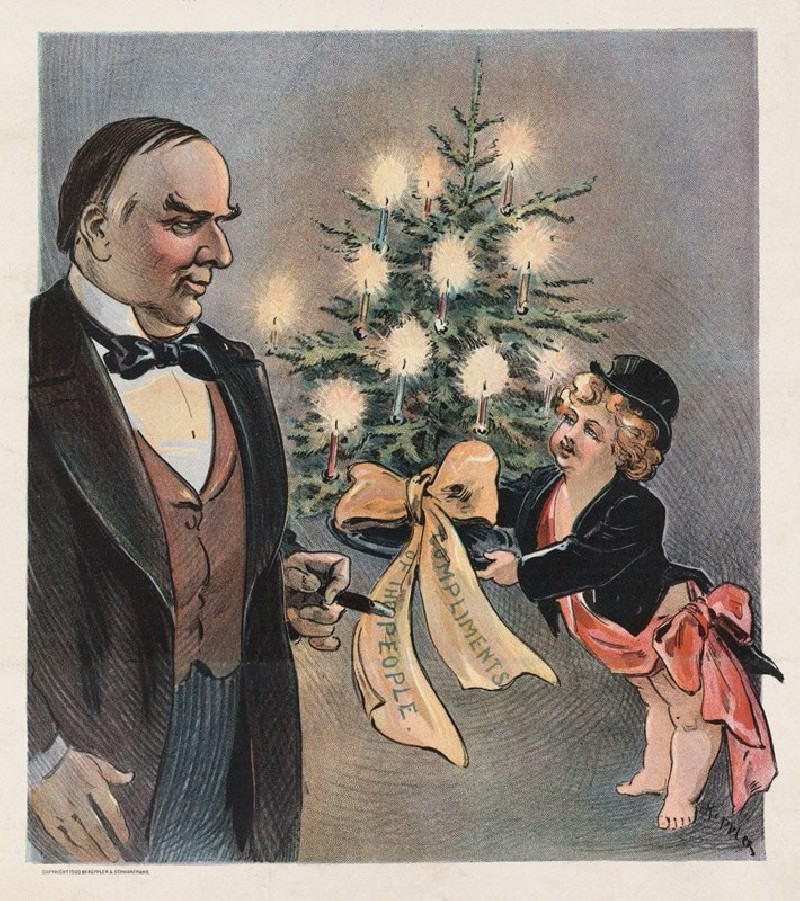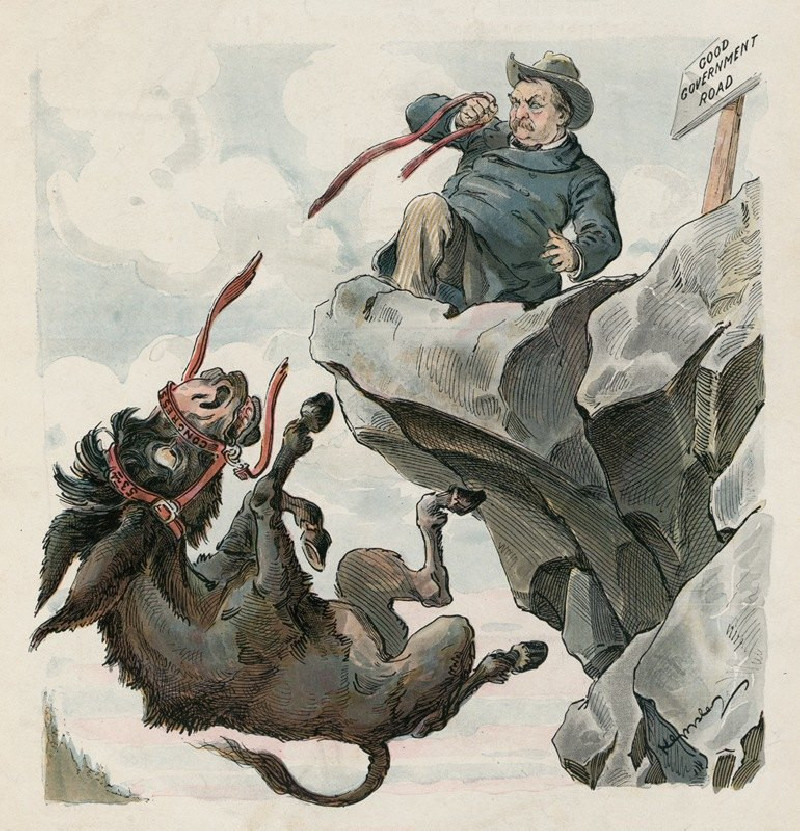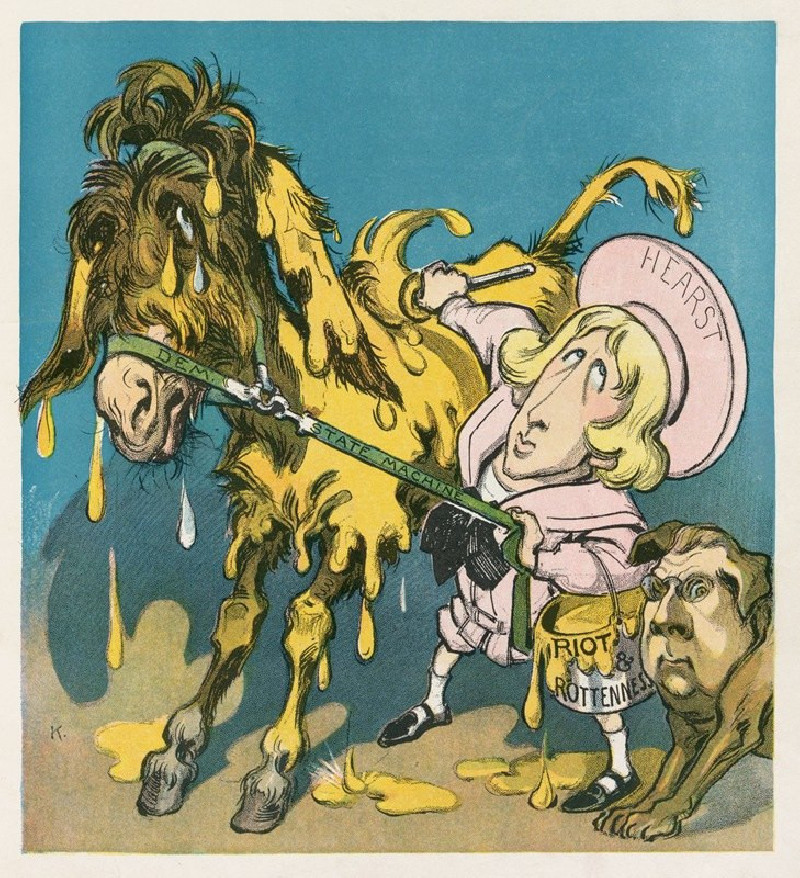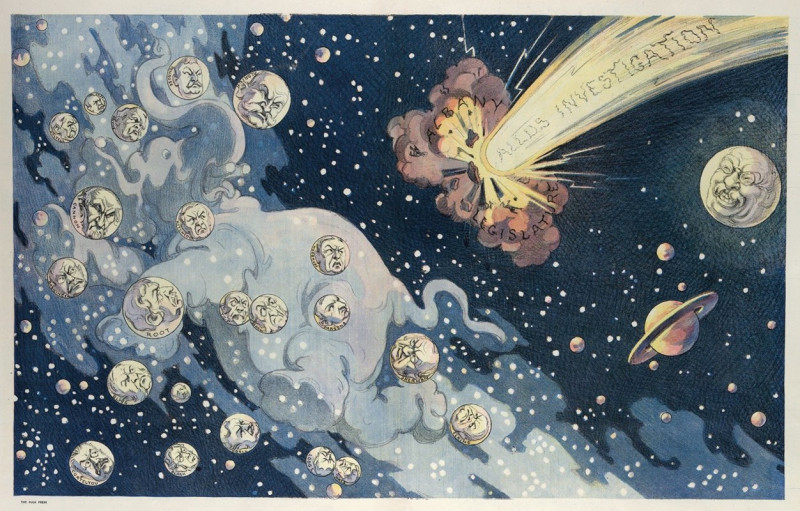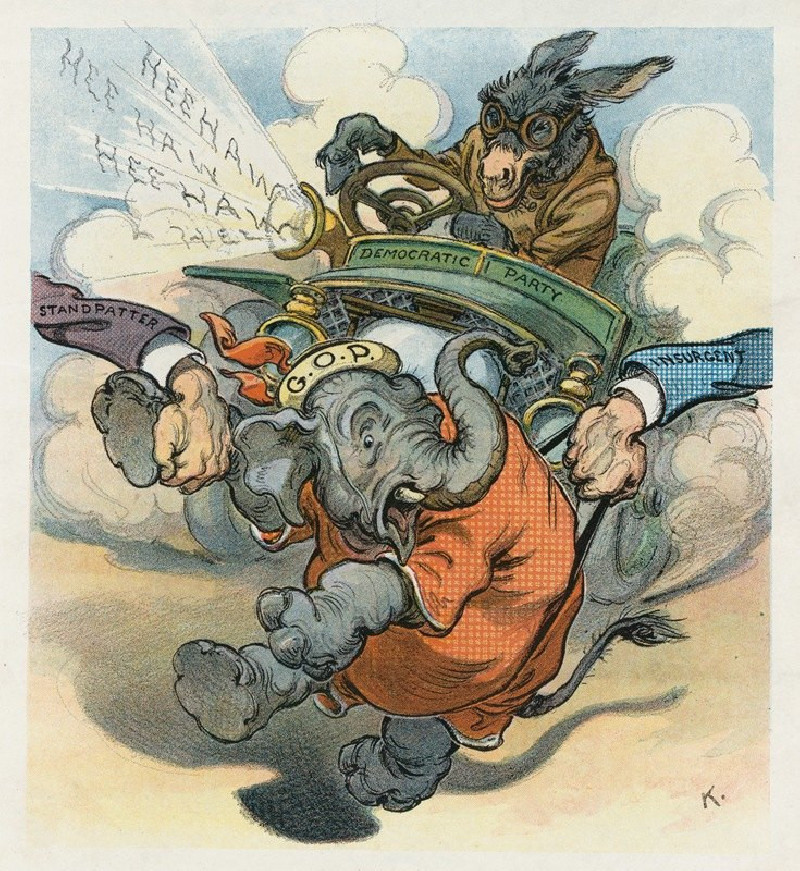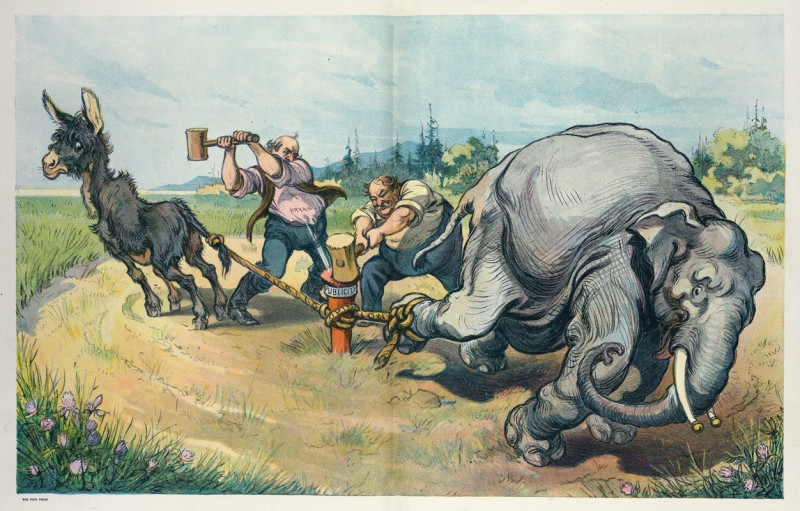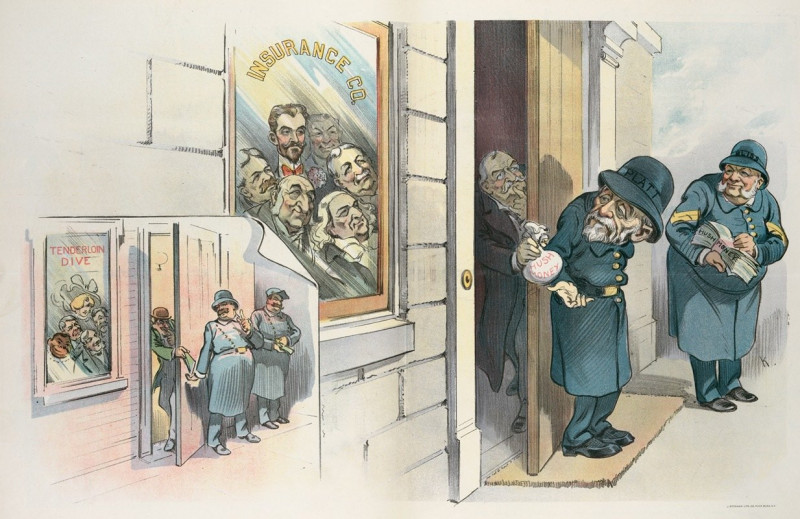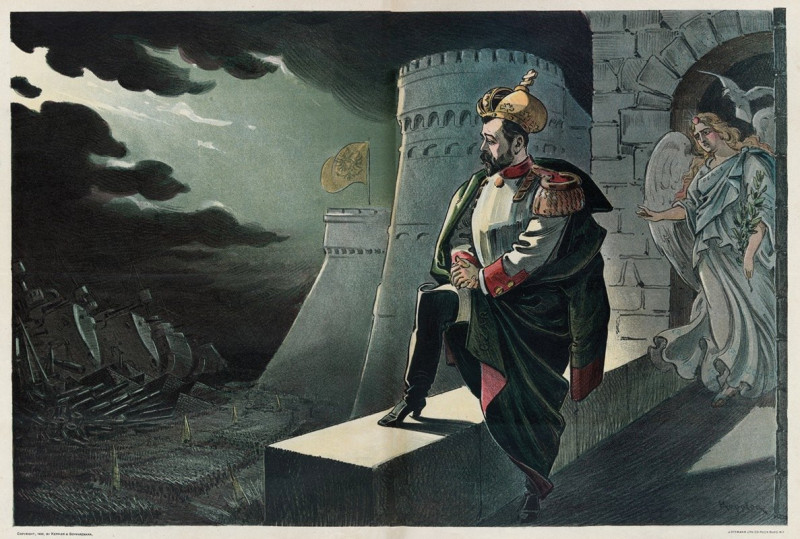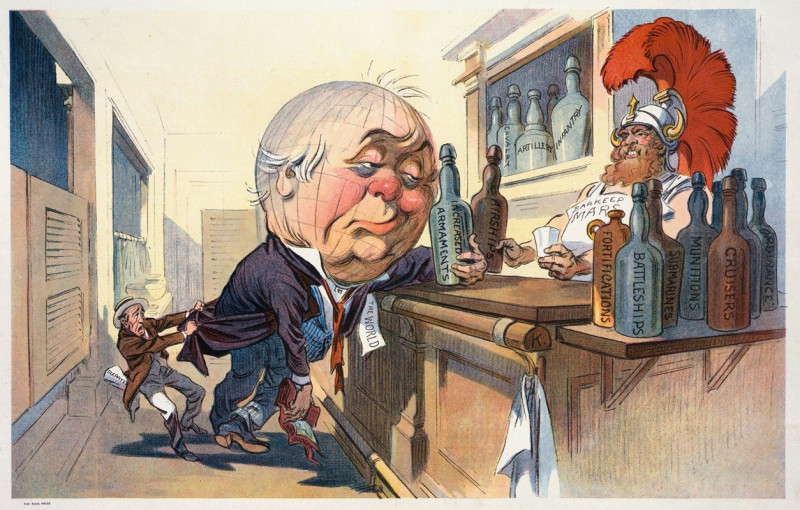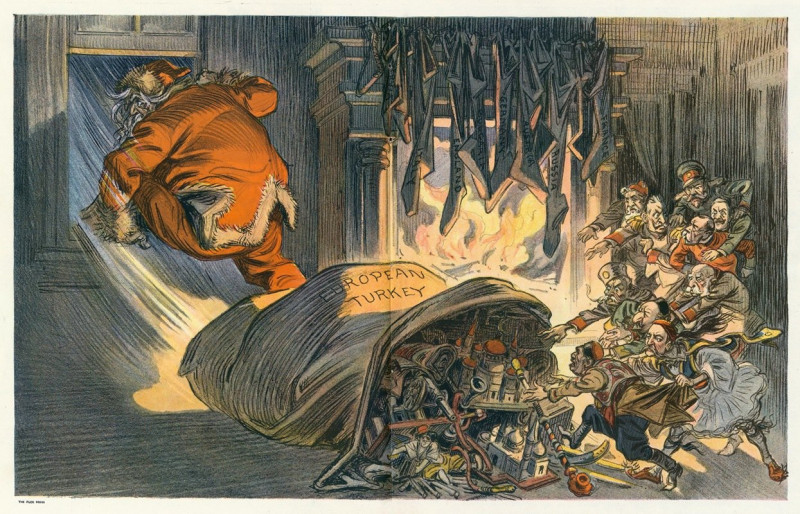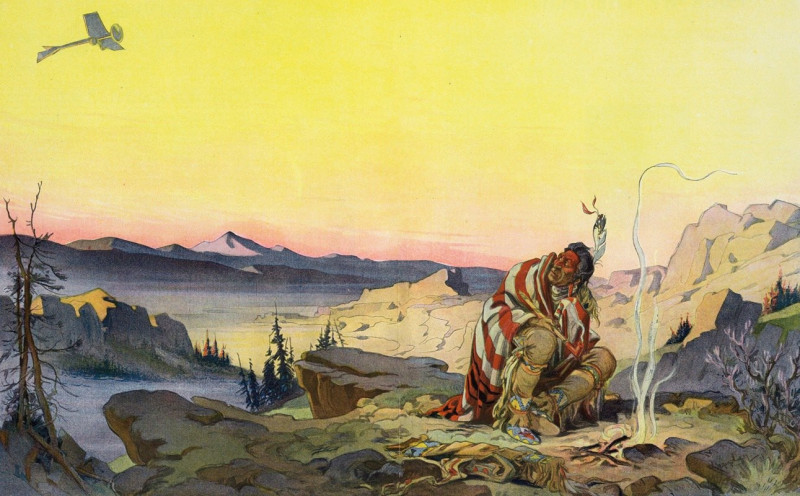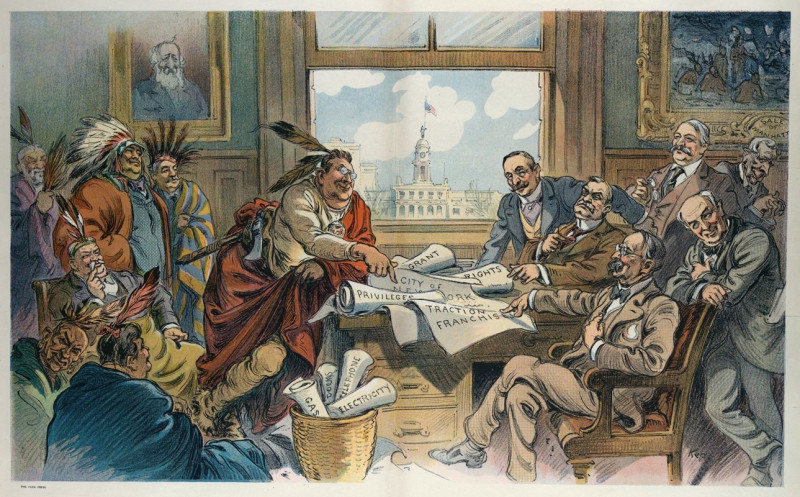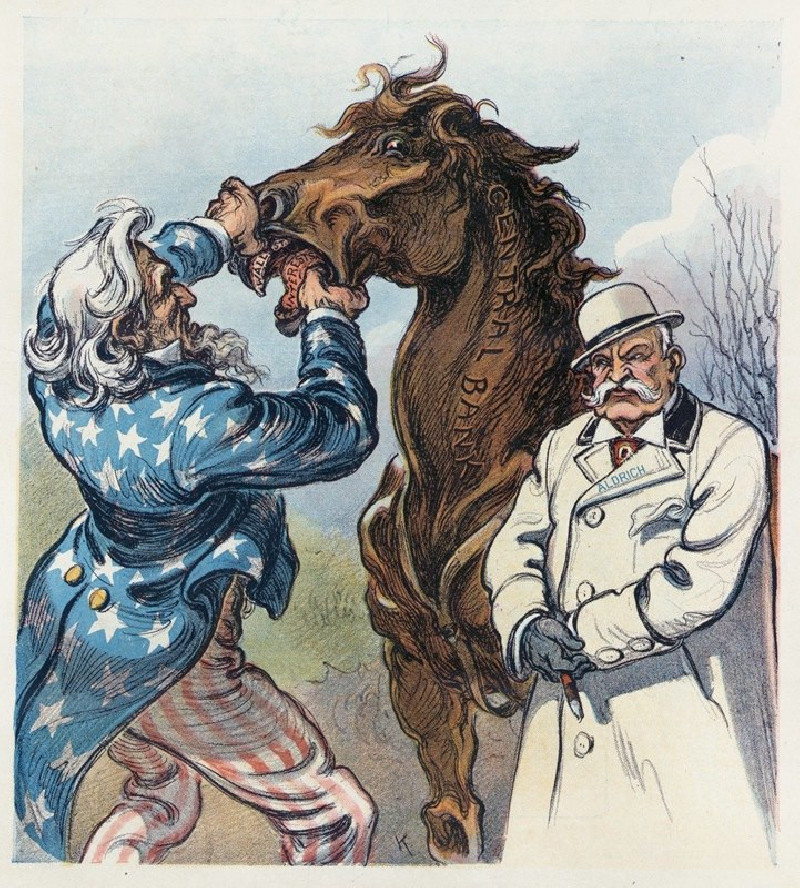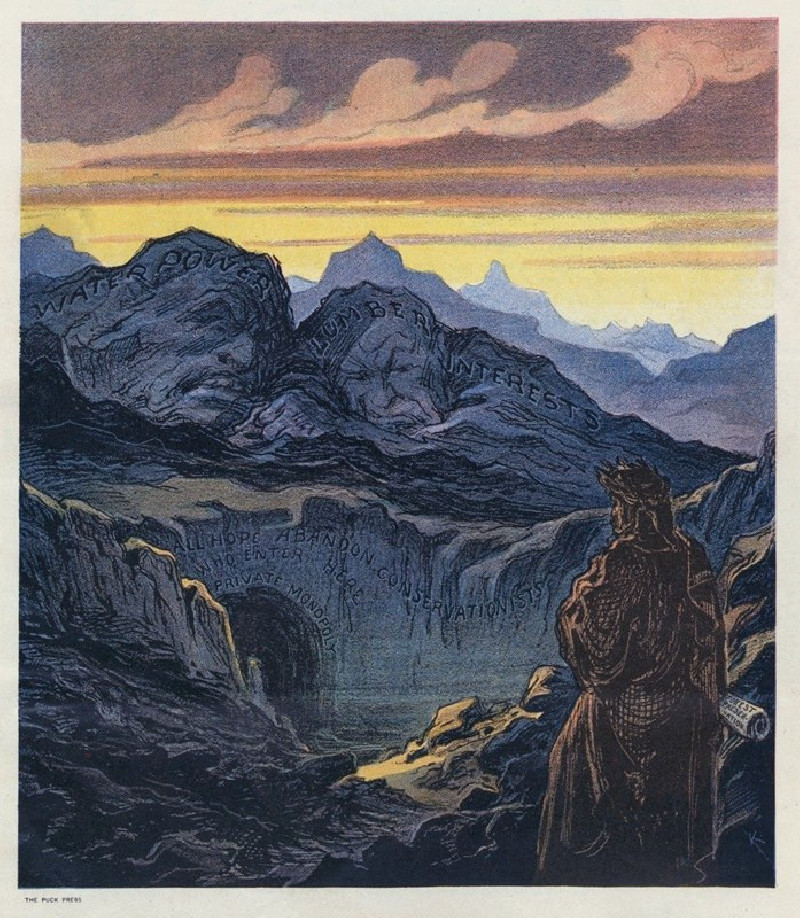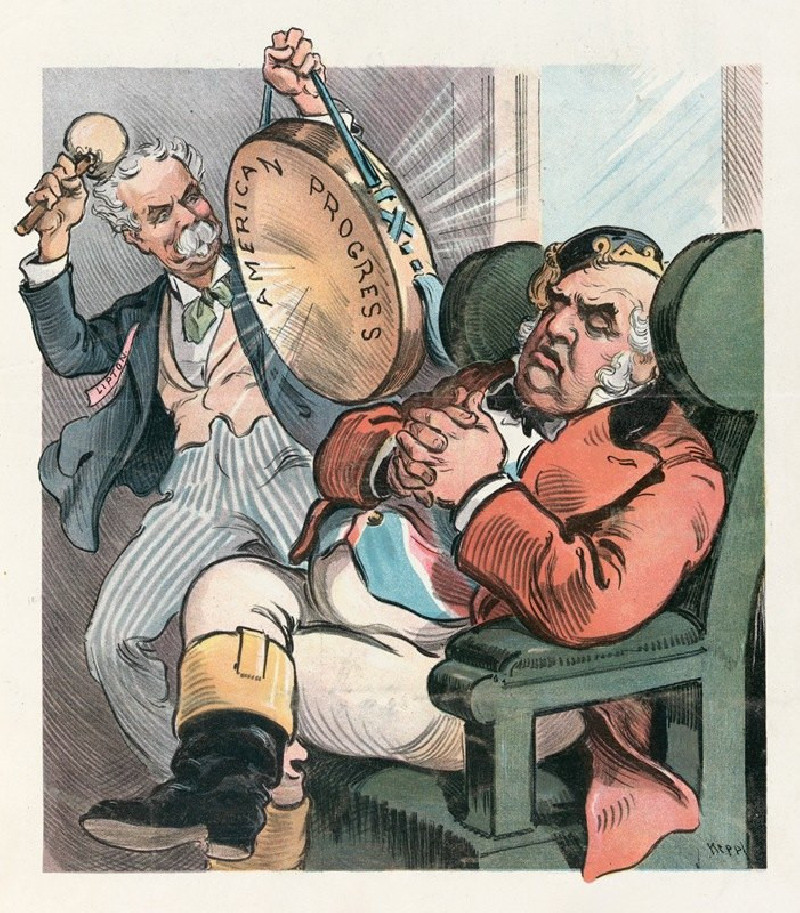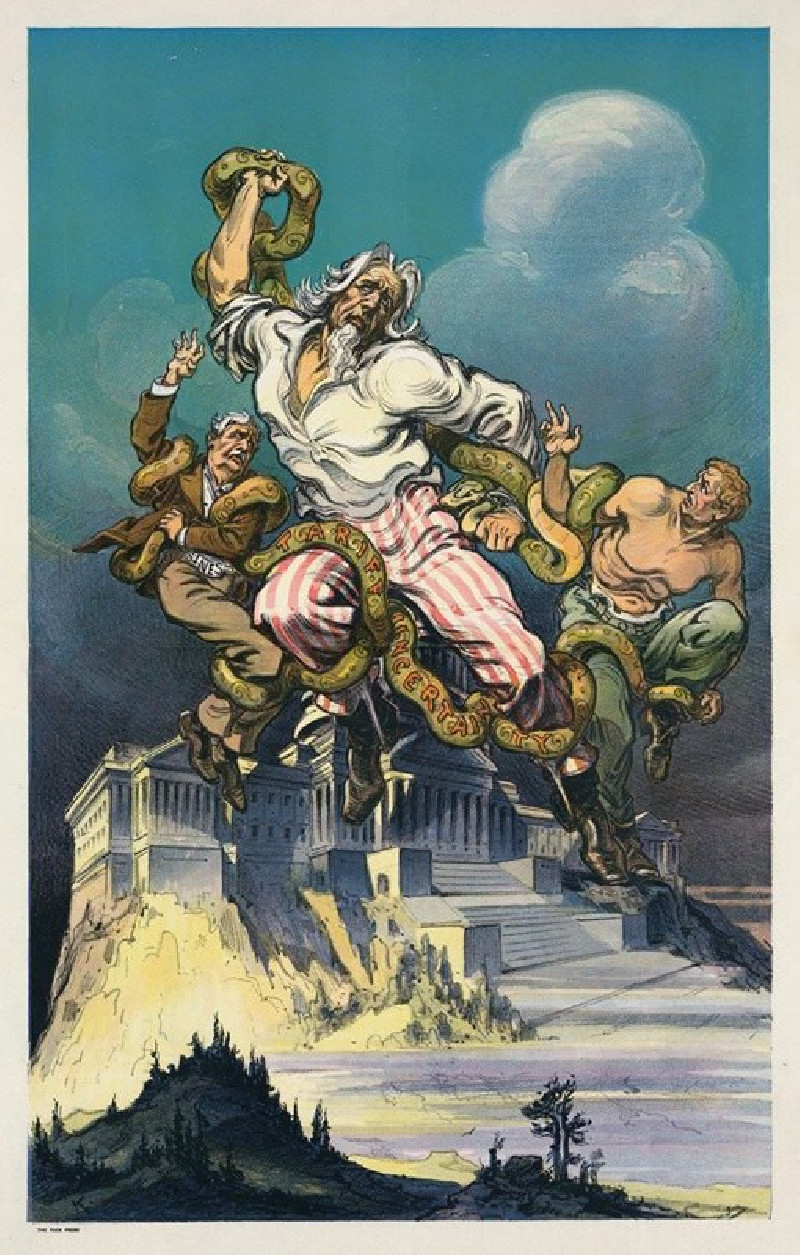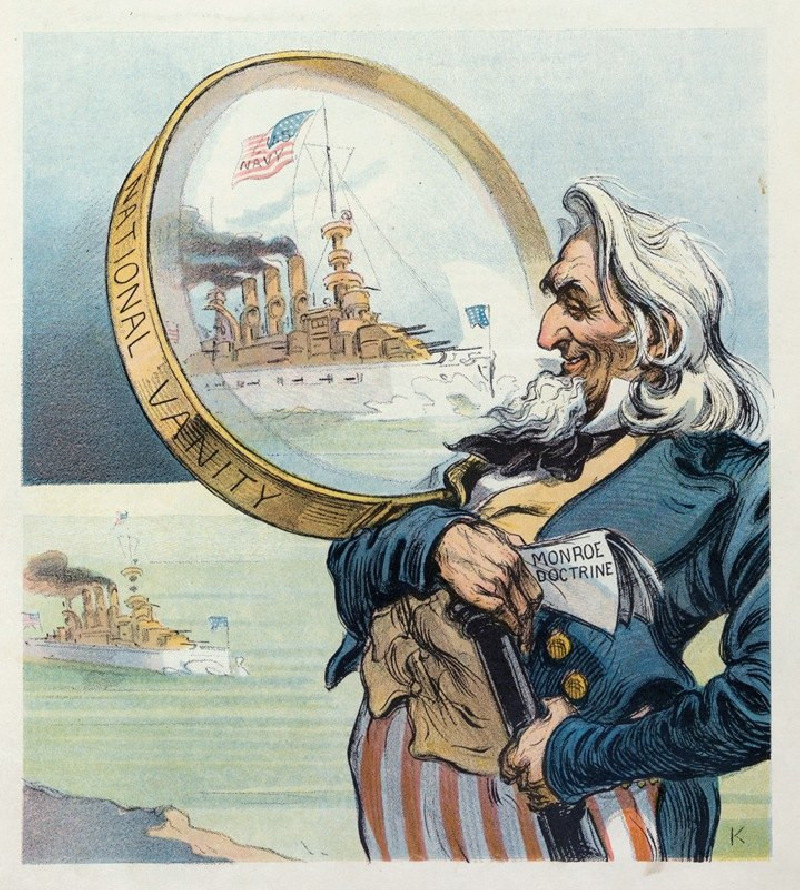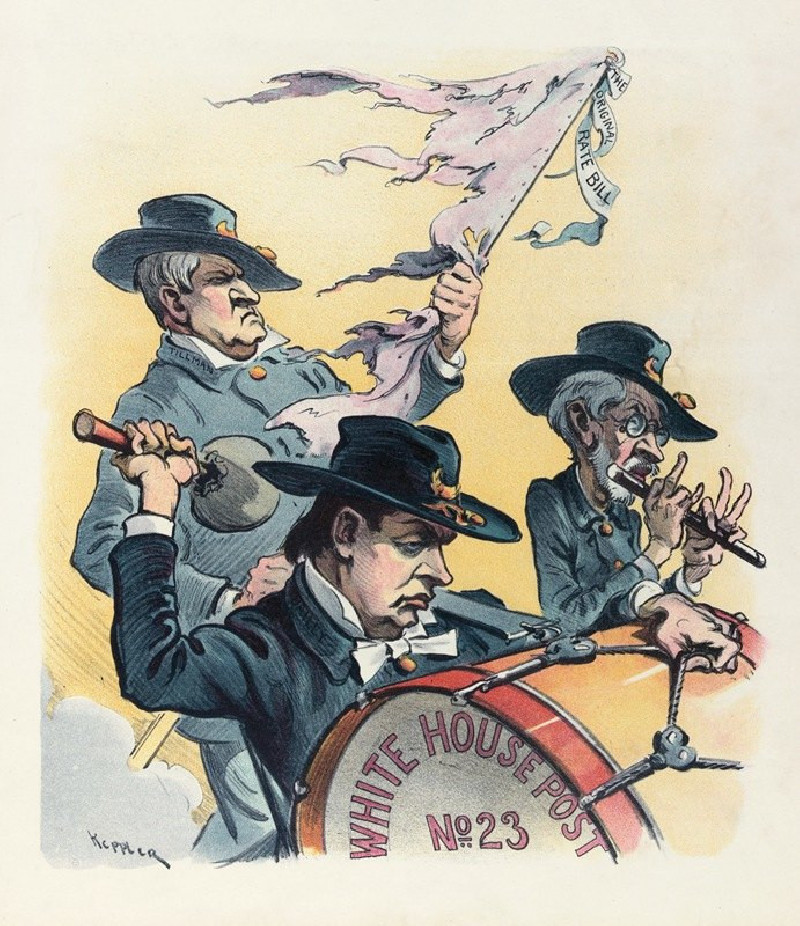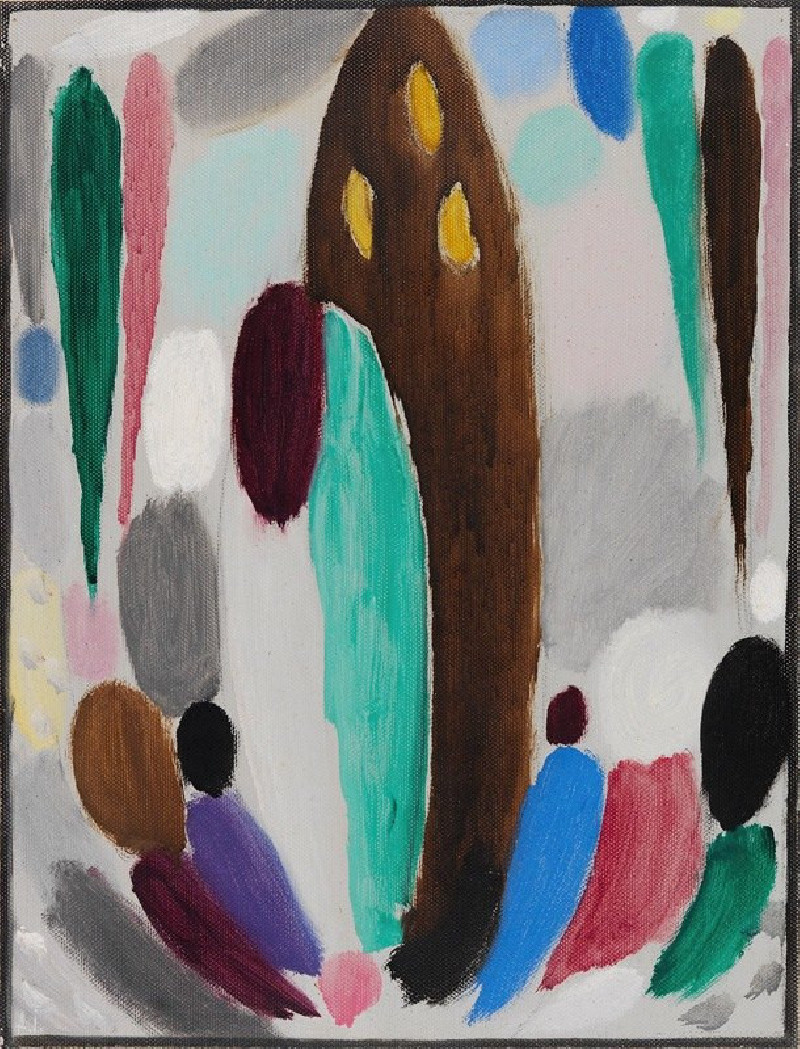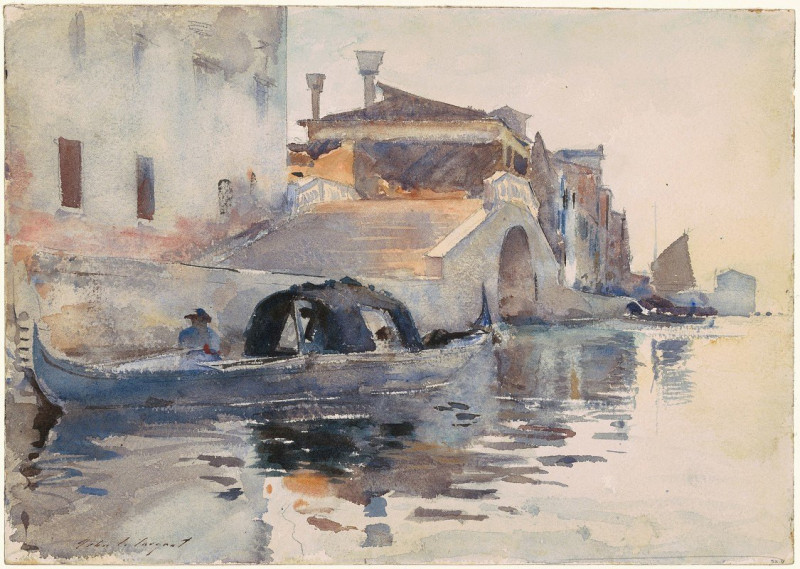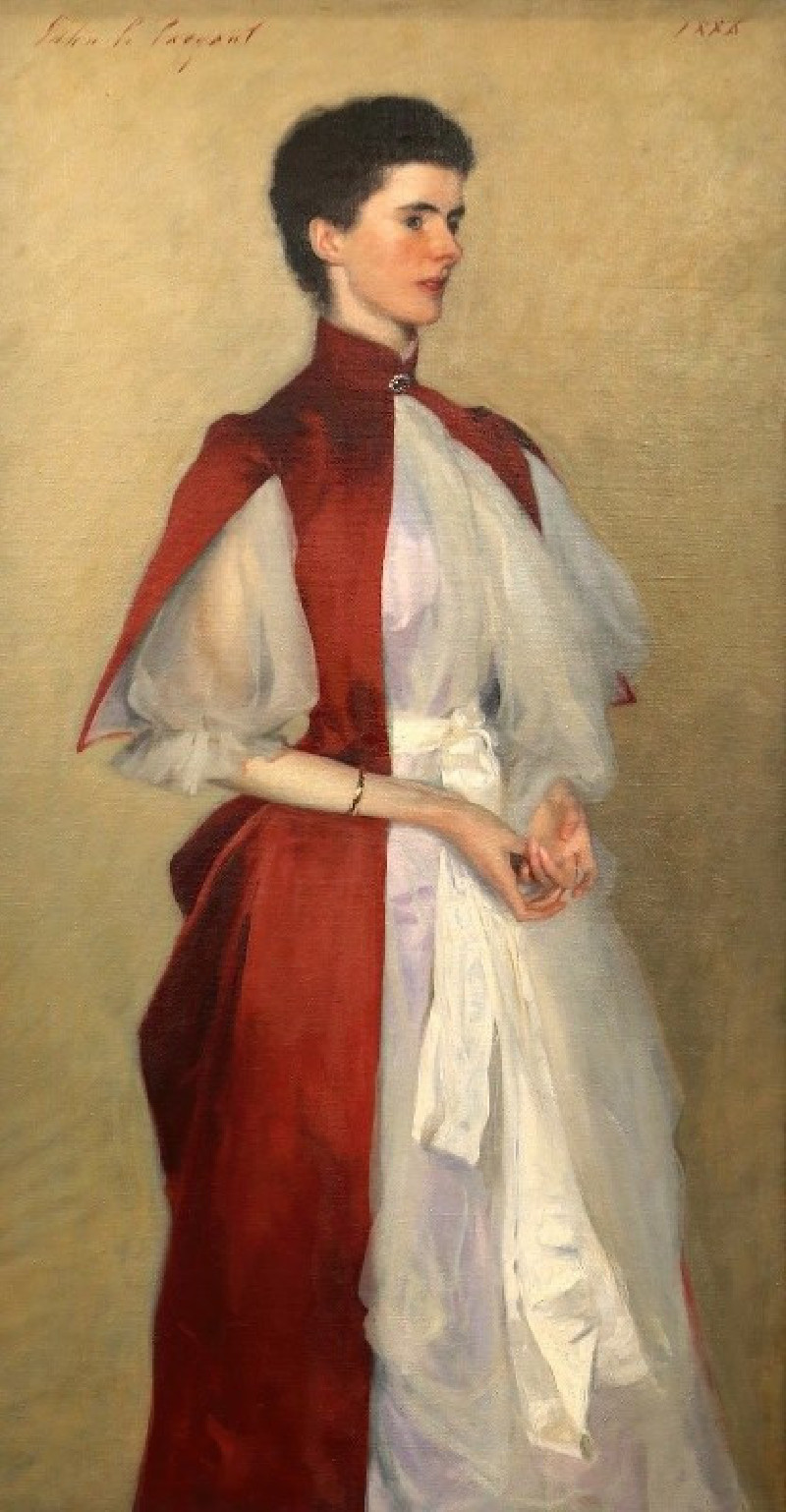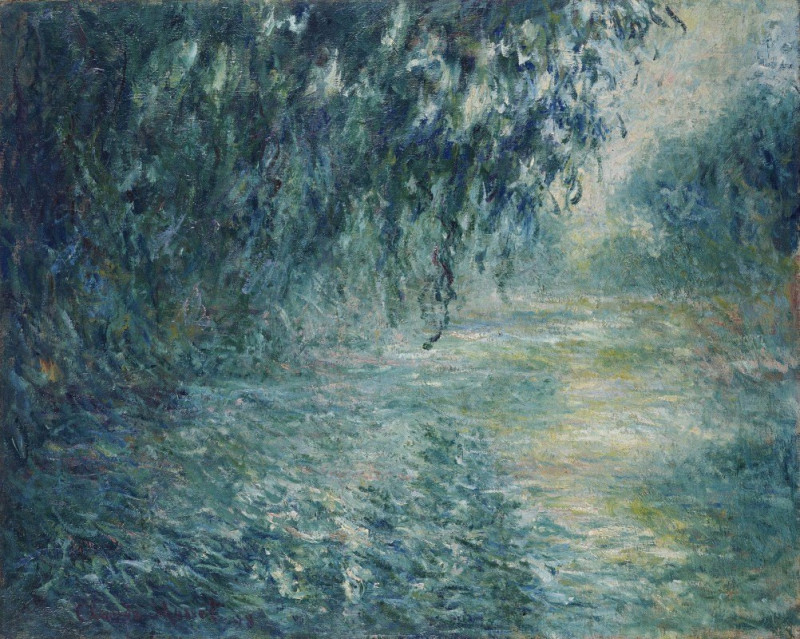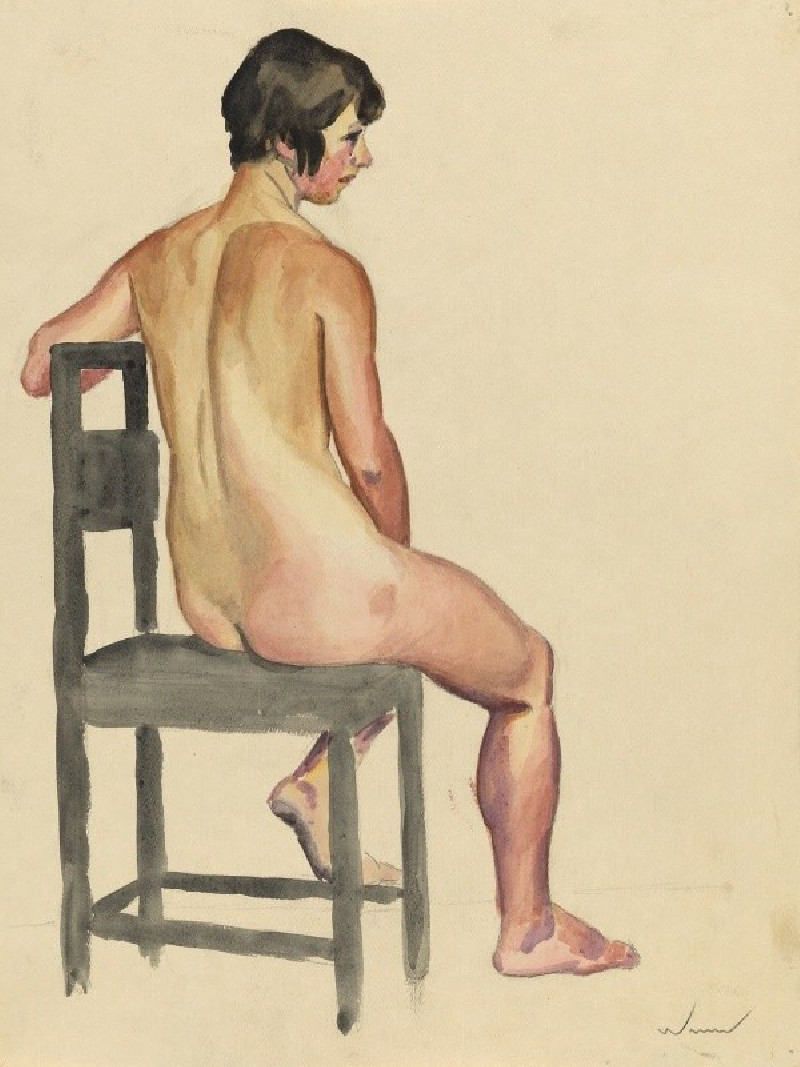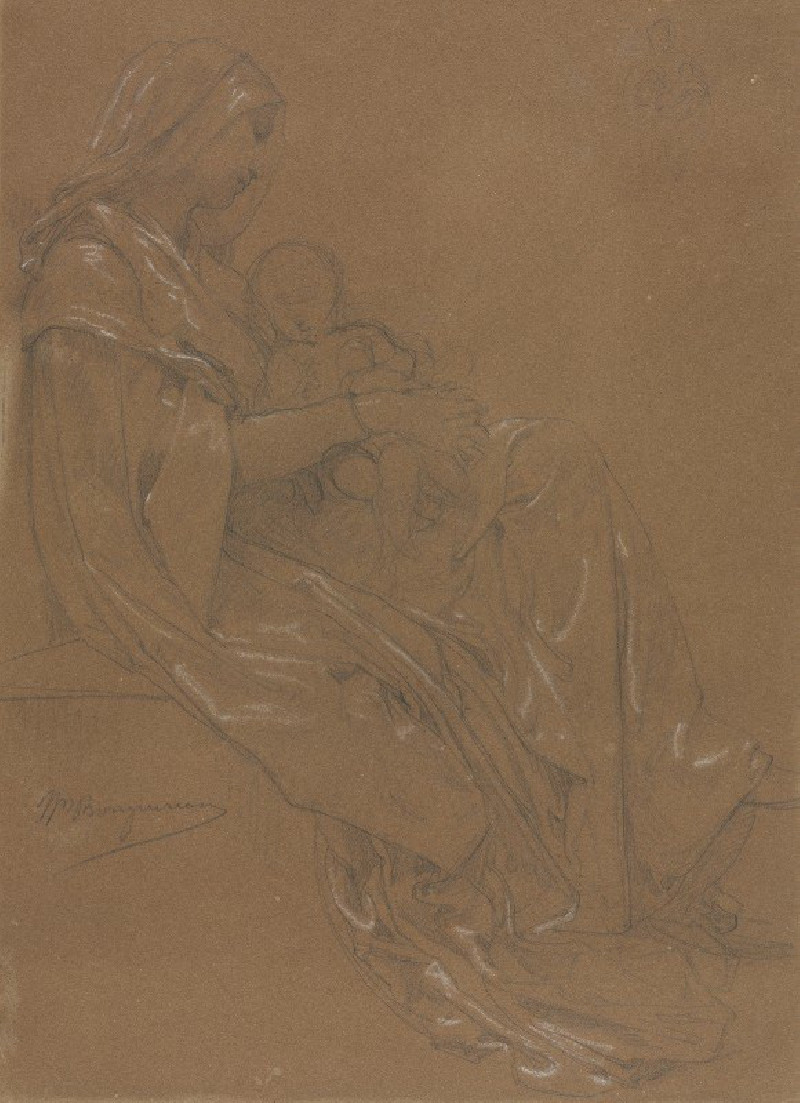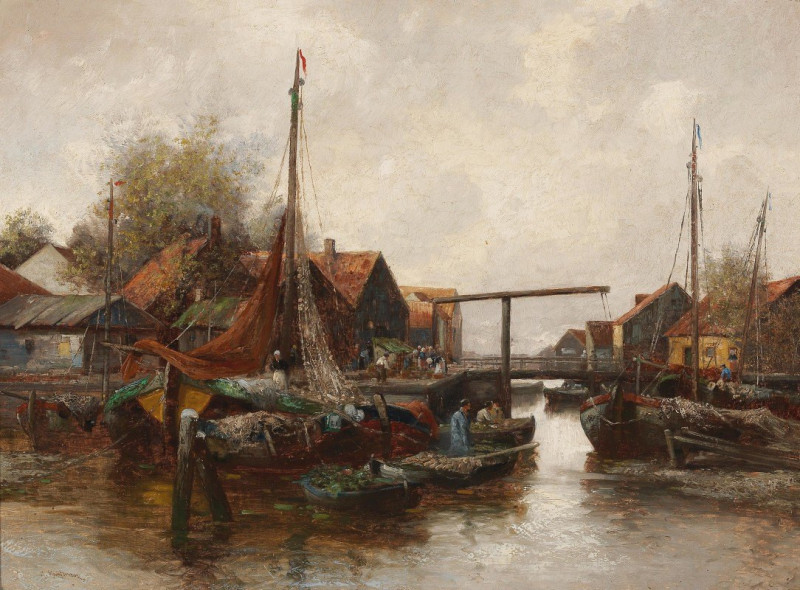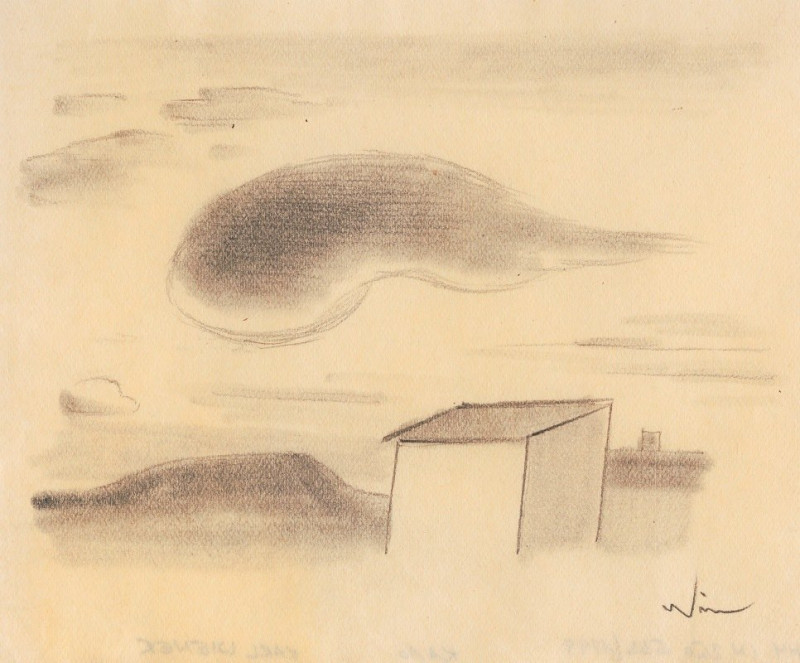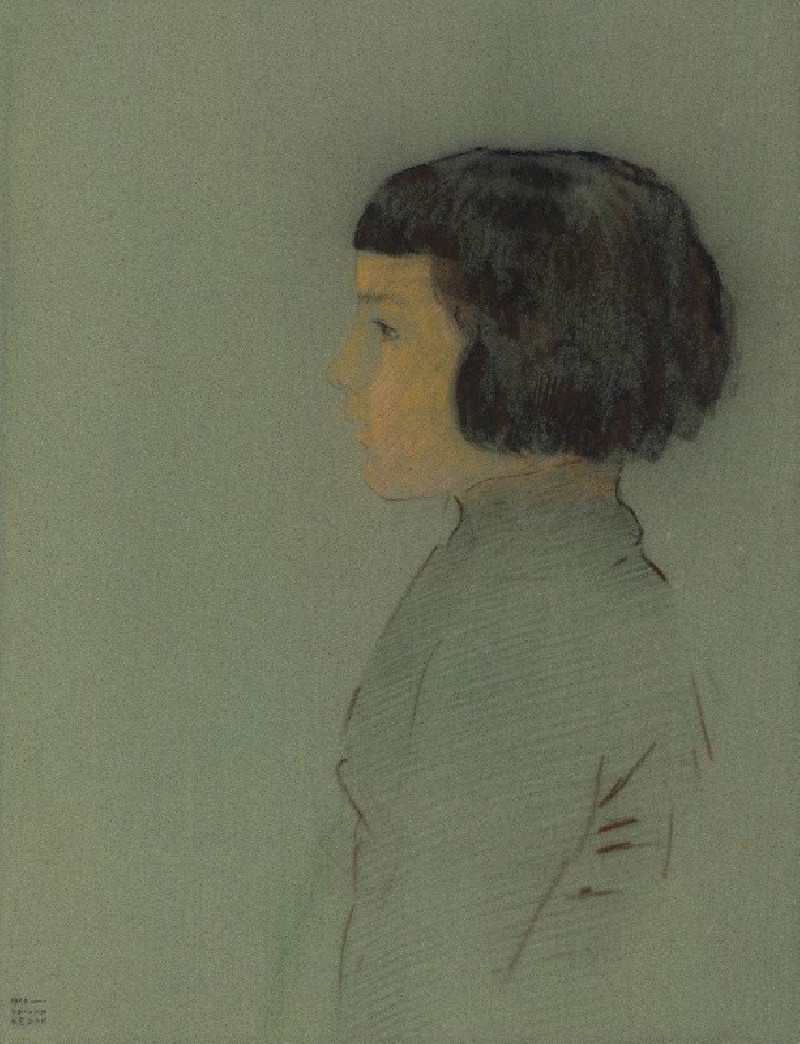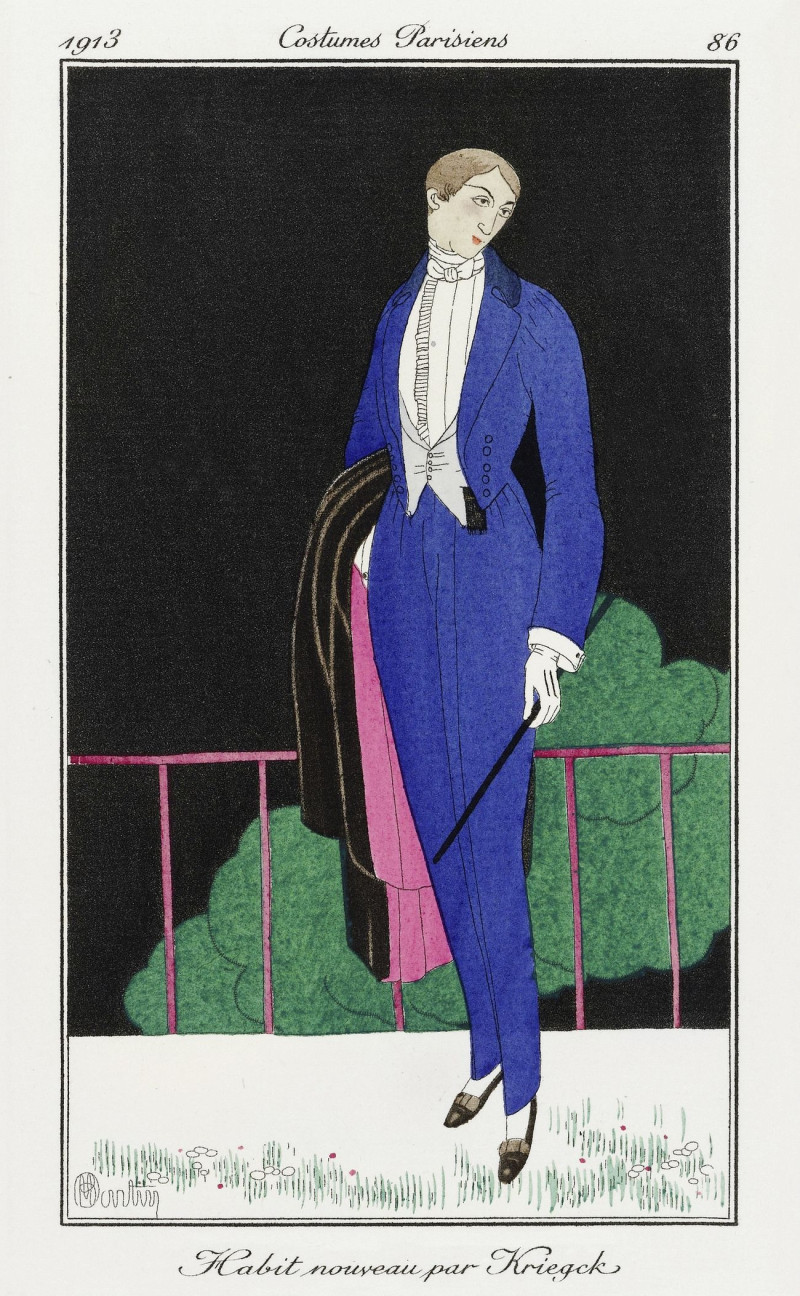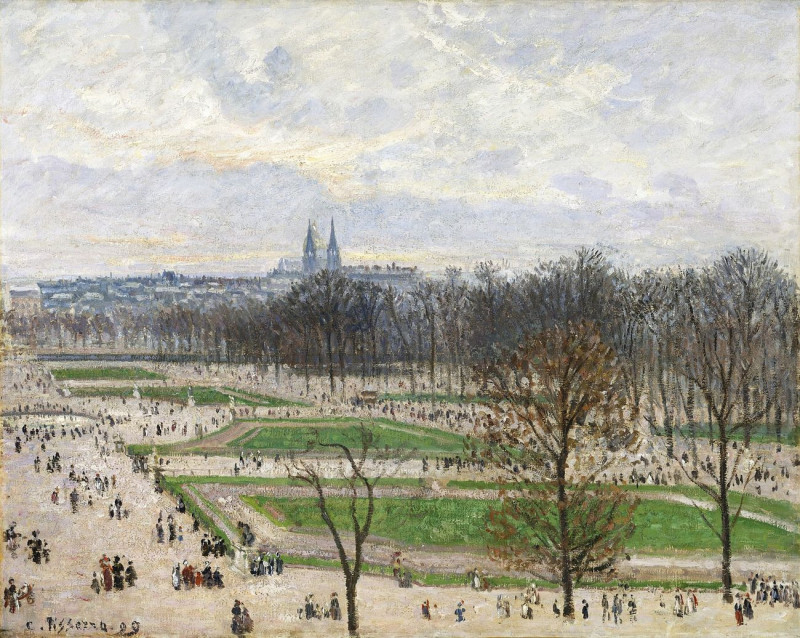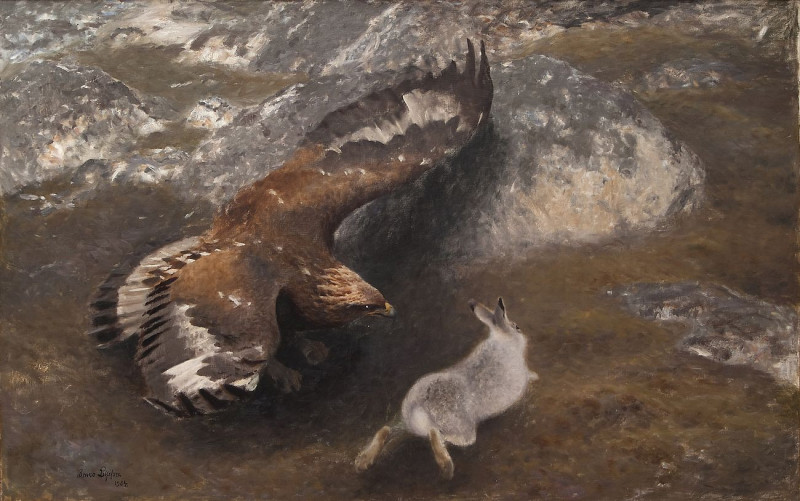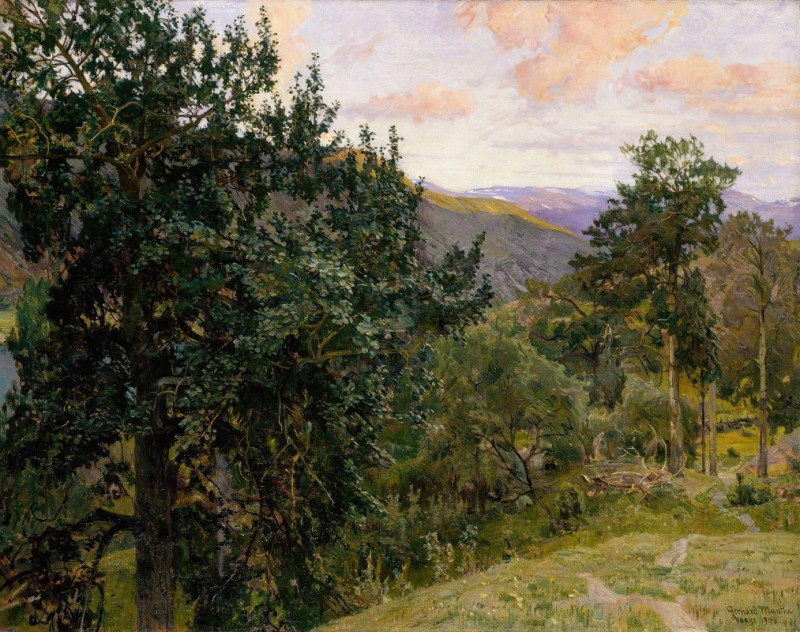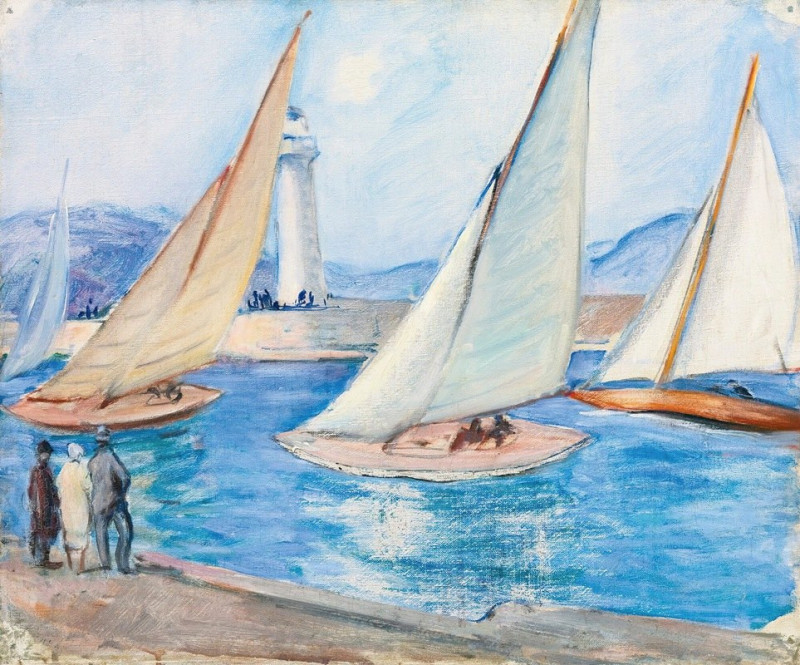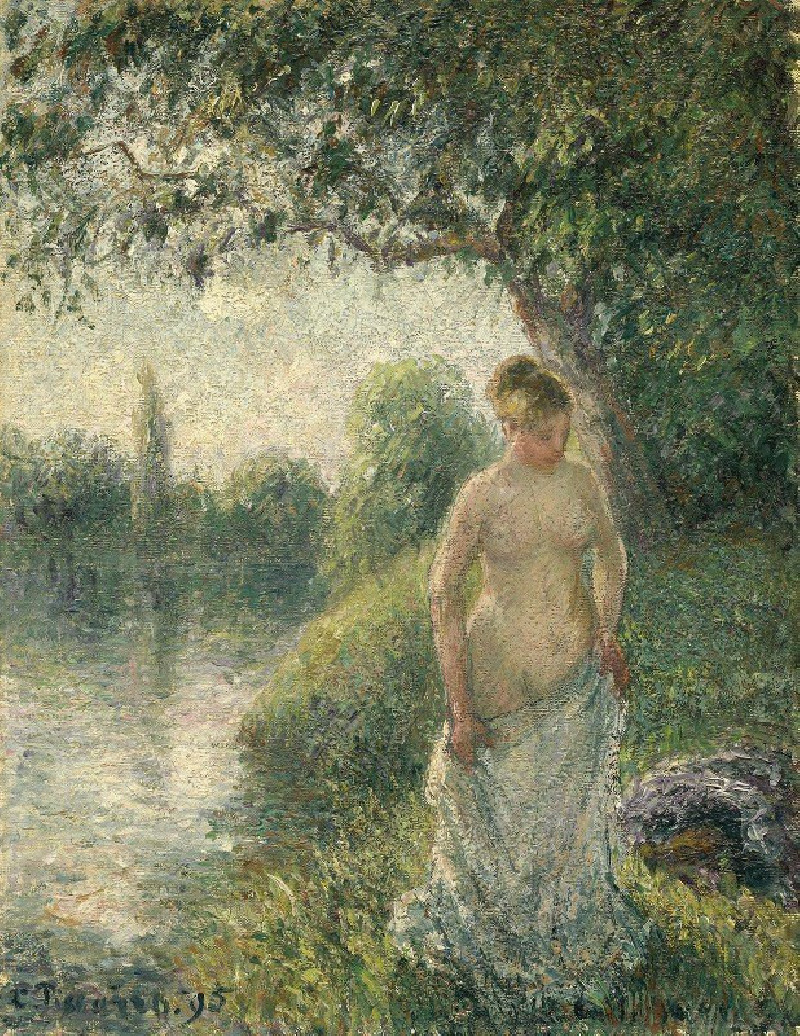There’s a new captain in the district (1913)
Technique: Giclée quality print
Recommended by our customers
More about this artwork
In the vibrant and thought-provoking painting "There’s a new captain in the district" by Udo Keppler, a poignant commentary on political and social corruption at the turn of the 20th century is vividly brought to life. This 1913 artwork masterfully uses allegory and symbolism to scrutinize the practices that were prevalent in public and private sectors during that era.The scene is set in a dimly lit street corner, aptly labeled "Crooked Business," where shady figures peek through the shutters, embodying the clandestine nature of corrupt activities. These characters, representing various facets of corrupt practices such as finance graft, food adulteration, and public land graft, eye the new authority figure warily. A prominent police officer, depicted in the foreground alongside a civilian, symbolizes a new regime of law and order aiming to clean up the district. Their determined and somewhat grim expressions suggest a readiness to challenge the status quo and restore integrity.Above the fray, signage such as "The Pork Barrel" and shuttered windows inscribed with dishonest professions underscore the widespread graft and exploitation, indicating that the tentacles of corruption stretch far across the urban landscape.Keppler’s work serves not only as a historical snapshot of past challenges but also as a timeless reflection on the ongoing struggle against societal corruption. This painting encourages viewers to reflect on the role of authority and the impact of corruption, themes that remain relevant in today’s global discourse.
Delivery
Returns
Udo J. Keppler, since 1894. known as Joseph Keppler, Jr., was an American political cartoonist, publisher, and Native American advocate. The son of cartoonist Joseph Keppler (1838–1894), who founded Puck magazine, the younger Keppler also contributed to cartoons, and after his father's death became co-owner of the magazine under the name Joseph Keppler. He was also a collector of Native American artifacts.


